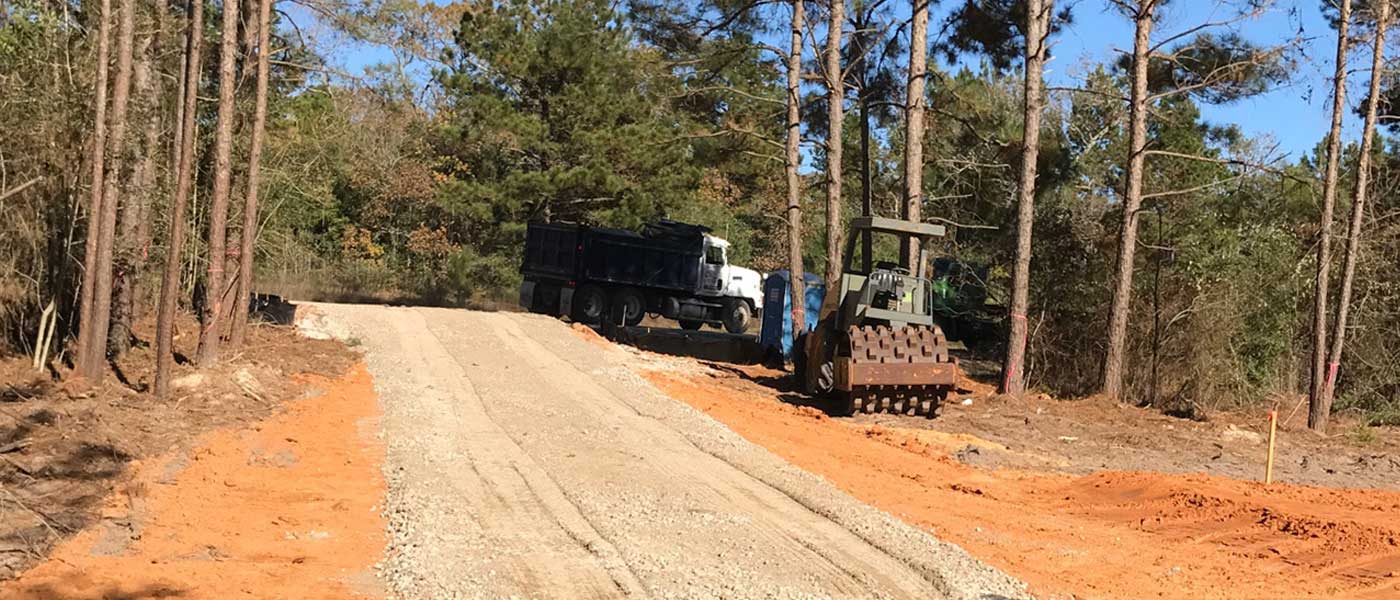
The Importance of Professional Residential Road Construction
Posted on 5/15/19 by Llewellyn's Construction
Why Is Professional Residential Road Construction Important?
Its time to start construction on your acreage dream home. Plans are being discussed and one of the first questions to come up is, “How are we going to access our property and get materials/contractors to the construction site? Residential road construction is a top priority and should be one of the first steps in prepping your property for the upcoming construction project.
Important factors to consider when planning your road construction include:
• The distance from the main road to the project site.
• The path the road will take…straight line to the job site or wind around trees and other landmarks.
• The topography of the proposed road location, taking into consideration any low lying areas, easements or major variances in elevations.
• The location of trees, vegetation, existing structures, rock formations, etc.
• The normal climate conditions for the region during the construction timeline.
• The intended function for the road. Will it be used strictly for construction traffic and be removed upon project completion, a permanent structure or a variance of both.
• Budget
With so many options, a professional Construction Company, who specializes in residential road construction, is invaluable.
Once a plan is in place, its time to get dirty! Since accessing your construction site is the first project on the list, staking out the entire road design will insure the proposed road fits the actual terrain. Mark and remove all obstacles that are located in or around the designated road area. Check the topography for possible water/drainage issues, soil stability, and any major variances in elevations, which could prevent access by larger delivery trucks. Usually, to insure uninterrupted construction traffic flow, the road area is built up, using truckloads of clay, as the road base. Culverts are installed, in the appropriate areas, to allow water to flow, away from the road and construction site. A dozer is used to smooth out the clay surface and compact the material for a solid foundation. A final grade is done, which includes creating a slight sloped edge along both sides of the roadway. This helps drain standing water away from the road surface, preventing pot holes and soft spots.
The next step will vary depending on whether the road is only a temporary access for construction traffic or intended to be a permanent fixture. For temporary roads, a layer of geo-matting can be laid across the compacted clay surface. Next, a top layer of aggregate, usually consisting of crushed concrete, is spread on top of the geo-matting. By using the geo-matting as a barrier between the clay and aggregate, the aggregates will not wind up getting mixed into the clay and eventually buried. The geo-matting also helps in the removal process, by allowing the aggregates to be easily separated from the clay, and then stored onsite for future projects. For a more permanent road, once the construction traffic has subsided, a re-graded to fix any damage which occurred during the construction phase, will be done to restore the road back to its original condition. Usually, additional truckloads of aggregates will be added to maximize the roads performance. The option of adding an asphalt and/or tar coating over the aggregate and clay base will further enhance the roads longevity and reduce dust.
The most durable and aesthetically appealing residential road consist of concrete and the necessary infrastructure and finish work. Most of the materials used to make the construction road are removed. Exceptions can include the clay base but modifications will be necessary to incorporate the rebar and forms used to outline and grid the roads dimensions, The aggregate can also be saved and incorporated as a filler material within the forms and grid. Unlike the construction road, the clay base will need to be installed as a flat surface. The forms are installed outlining the roads design as per the specifications laid out in the blueprints. Rebar is laid out in a grid pattern and wired together at each “T” intersection. Plastic spacers are placed randomly at these "T"'s to raise the entire rebar grid off the ground. By allowing the concrete pour to encapsulate the rebar grid, the weight capacity of the road is maximized. Once the concrete is poured and leveled out, stamping, stains and other finishes can be added for a more custom look along with curbs, drains and other detail designs.
Roads are developed for many different purposes. Developments of large tracks of residential or commercial land require roadways that can be safely and conveniently used. Whatever the roadway need is, hiring a professional company who’s experienced in residential road construction will give you peace of mind and the company you can count on is Llewellyn’s Construction. Give us a call and we’ll get you on that Road to Somewhere!